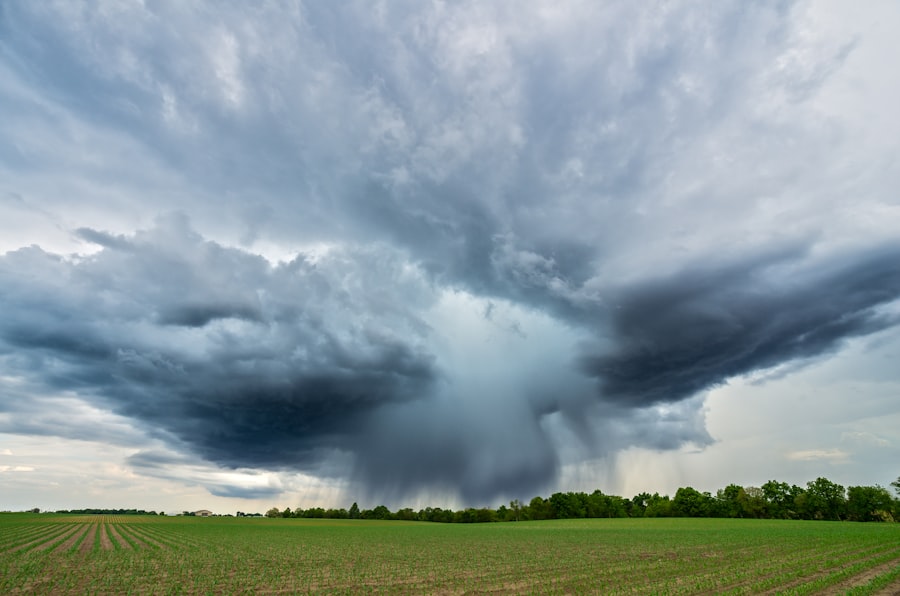The relationship between women’s rights and environmental issues is increasingly recognized as a critical area of study and activism. At its core, this intersection highlights how environmental degradation disproportionately affects women, particularly in developing countries where resources are scarce and social structures often limit women’s rights. The degradation of natural resources, such as water, land, and forests, not only threatens the environment but also exacerbates existing gender inequalities.
This situation creates a vicious cycle where environmental issues hinder women’s rights and empowerment, while simultaneously limiting their ability to contribute to sustainable solutions. Moreover, the intersection of these two fields is not merely a matter of impact; it also encompasses the role women play in advocating for environmental justice.
Women have historically been at the forefront of environmental movements, often leading grassroots initiatives that address local ecological concerns. Their unique perspectives and experiences enable them to identify sustainable practices that benefit both their communities and the environment. As such, understanding the intersection of women’s rights and environmental issues is essential for developing comprehensive strategies that promote both gender equality and ecological sustainability.
This dual focus can lead to more effective policies that recognize the interconnectedness of social justice and environmental stewardship.
Key Takeaways
- Women’s rights and environmental issues are interconnected and must be addressed together to achieve sustainable and equitable solutions.
- Environmental degradation disproportionately affects women, particularly in developing countries, due to their roles as primary caregivers and reliance on natural resources for their livelihoods.
- Women play a crucial role as environmental stewards and advocates, often leading grassroots movements and driving change at the local level.
- Gender-responsive climate policies are essential to address the unique challenges and vulnerabilities faced by women in the face of climate change.
- Empowering women through education, access to resources, and leadership opportunities is key to effectively addressing environmental challenges and promoting sustainable development.
- Building solidarity between women’s rights and environmental movements is crucial for creating a powerful and inclusive force for positive change.
The Disproportionate Impact of Environmental Degradation on Women
Environmental degradation manifests in various forms, including deforestation, pollution, and climate change, each of which has distinct implications for women’s lives. For instance, in many rural communities around the world, women are primarily responsible for securing water for their households. As climate change leads to prolonged droughts and erratic rainfall patterns, women often find themselves traveling greater distances to access clean water.
This not only consumes time that could be spent on education or income-generating activities but also exposes them to risks such as violence or exploitation during their journeys. The burden of water scarcity thus reinforces traditional gender roles while simultaneously limiting women’s opportunities for empowerment. In urban settings, pollution and environmental hazards disproportionately affect women as well.
Women are often more vulnerable to health issues arising from poor air quality or contaminated water sources due to biological differences and social roles that place them in closer proximity to these hazards. For example, studies have shown that pregnant women exposed to high levels of air pollution are at greater risk for complications during pregnancy, which can have long-term effects on both maternal and child health. Furthermore, women in low-income neighborhoods may lack access to healthcare services that could mitigate these risks, further entrenching cycles of poverty and inequality.
The intersection of environmental degradation and women’s health underscores the urgent need for policies that address these disparities.
Women as Environmental Stewards and Advocates

Despite the challenges posed by environmental degradation, women have emerged as powerful stewards of the environment. Their traditional knowledge and practices often emphasize sustainability and conservation, making them invaluable allies in the fight against ecological destruction. For instance, Indigenous women around the world have long been custodians of their ancestral lands, employing sustainable agricultural practices that preserve biodiversity and protect ecosystems.
Their deep understanding of local flora and fauna enables them to manage resources in ways that are both environmentally sound and culturally relevant. Moreover, women have taken on leadership roles in environmental advocacy, mobilizing communities to address pressing ecological issues.
These organizations recognize that when women are given the tools and resources to advocate for their rights and the environment, they can drive significant change at local, national, and global levels. The stories of women like Wangari Maathai, who founded the Green Belt Movement in Kenya, illustrate how female leadership can lead to transformative environmental policies that benefit entire communities.
The Importance of Gender-Responsive Climate Policies
The development of gender-responsive climate policies is essential for addressing the intertwined challenges of gender inequality and environmental degradation. Such policies recognize that men and women experience climate change differently due to existing social norms and roles. For example, when formulating disaster response strategies, it is crucial to consider how women may be disproportionately affected by natural disasters due to their caregiving responsibilities or lack of access to resources.
By incorporating gender analysis into climate policy frameworks, governments can create more equitable responses that address the specific needs of women. Furthermore, gender-responsive policies can enhance the effectiveness of climate action by leveraging women’s unique contributions to sustainability. Research has shown that when women are included in decision-making processes related to environmental management, outcomes tend to be more favorable for both communities and ecosystems.
For instance, a study conducted by the World Bank found that projects involving female participation were more likely to succeed in achieving sustainable development goals than those led solely by men. This evidence underscores the importance of integrating gender considerations into climate policies not only as a matter of equity but also as a strategy for achieving better environmental outcomes.
Empowering Women to Address Environmental Challenges
Empowering women is a critical step toward addressing environmental challenges effectively. This empowerment can take many forms, including education, access to resources, and participation in decision-making processes. Education plays a pivotal role in equipping women with the knowledge and skills necessary to engage in sustainable practices and advocate for their rights.
Programs that focus on educating women about climate change impacts and sustainable resource management can lead to more resilient communities capable of adapting to environmental changes. Access to financial resources is another crucial aspect of empowerment. Microfinance initiatives aimed at women can provide them with the capital needed to start businesses focused on sustainable practices or invest in renewable energy solutions.
For example, in Bangladesh, programs that offer microloans to women for solar energy projects have not only improved access to clean energy but also enhanced women’s economic independence. By fostering entrepreneurship among women in environmentally friendly sectors, communities can benefit from both economic growth and improved ecological health.
Building Solidarity Between Women’s Rights and Environmental Movements

The need for solidarity between women’s rights movements and environmental movements has never been more pressing. Both movements share common goals: promoting justice, equity, and sustainability for future generations. By collaborating, these movements can amplify their voices and create a more powerful platform for change.
For instance, joint campaigns that highlight the interconnectedness of gender equality and environmental sustainability can raise awareness about how climate change disproportionately affects women while also showcasing women’s contributions to environmental stewardship. Building solidarity requires recognizing the diverse experiences of women across different cultures and contexts. It is essential to include voices from marginalized communities who often bear the brunt of both gender inequality and environmental degradation.
Initiatives that foster dialogue between women’s rights activists and environmental advocates can lead to innovative solutions that address both sets of challenges simultaneously. For example, international conferences that bring together leaders from both movements can facilitate knowledge sharing and collaboration on projects aimed at promoting sustainable development while advancing women’s rights. In conclusion, the intersection of women’s rights and environmental issues presents both challenges and opportunities for creating a more equitable world.
By understanding how environmental degradation disproportionately impacts women, recognizing their roles as stewards of the environment, advocating for gender-responsive policies, empowering women through education and resources, and building solidarity between movements, we can work towards a future where both gender equality and ecological sustainability are prioritized.
In exploring the intricate connections between women and the environment, it is essential to consider the broader cultural contexts that shape these relationships. An insightful article that complements the themes discussed in “Women and Environment: Linking Struggles and Rights” is Introduction to Culture in Indian Society. This article delves into the cultural dynamics within Indian society, offering a deeper understanding of how cultural norms and practices influence environmental interactions and gender roles. By examining these cultural underpinnings, we can better appreciate the unique challenges and opportunities faced by women in their environmental advocacy and rights movements.
FAQs
What is the connection between women and the environment?
Women are disproportionately affected by environmental issues due to their roles as primary caregivers, reliance on natural resources for their livelihoods, and limited access to decision-making processes. Additionally, women often bear the brunt of the impacts of environmental degradation, such as water scarcity, food insecurity, and health problems.
How do women’s rights intersect with environmental issues?
Women’s rights and environmental issues are interconnected as women’s empowerment and gender equality are essential for sustainable environmental management. Ensuring women’s rights to land, resources, and participation in decision-making processes can lead to more effective and equitable environmental policies and practices.
What are some examples of women-led environmental initiatives?
There are numerous examples of women-led environmental initiatives around the world, including grassroots movements for sustainable agriculture, conservation efforts, and advocacy for clean energy. These initiatives often prioritize the needs and perspectives of women and marginalized communities in addressing environmental challenges.
How can addressing women’s rights contribute to environmental sustainability?
Addressing women’s rights can contribute to environmental sustainability by promoting more inclusive and equitable approaches to natural resource management, reducing poverty and inequality, and fostering resilience to environmental changes. Empowering women can also lead to more effective and sustainable environmental policies and practices.























+ There are no comments
Add yours